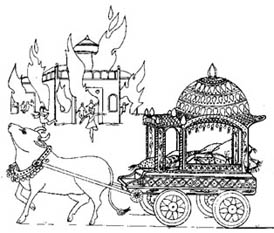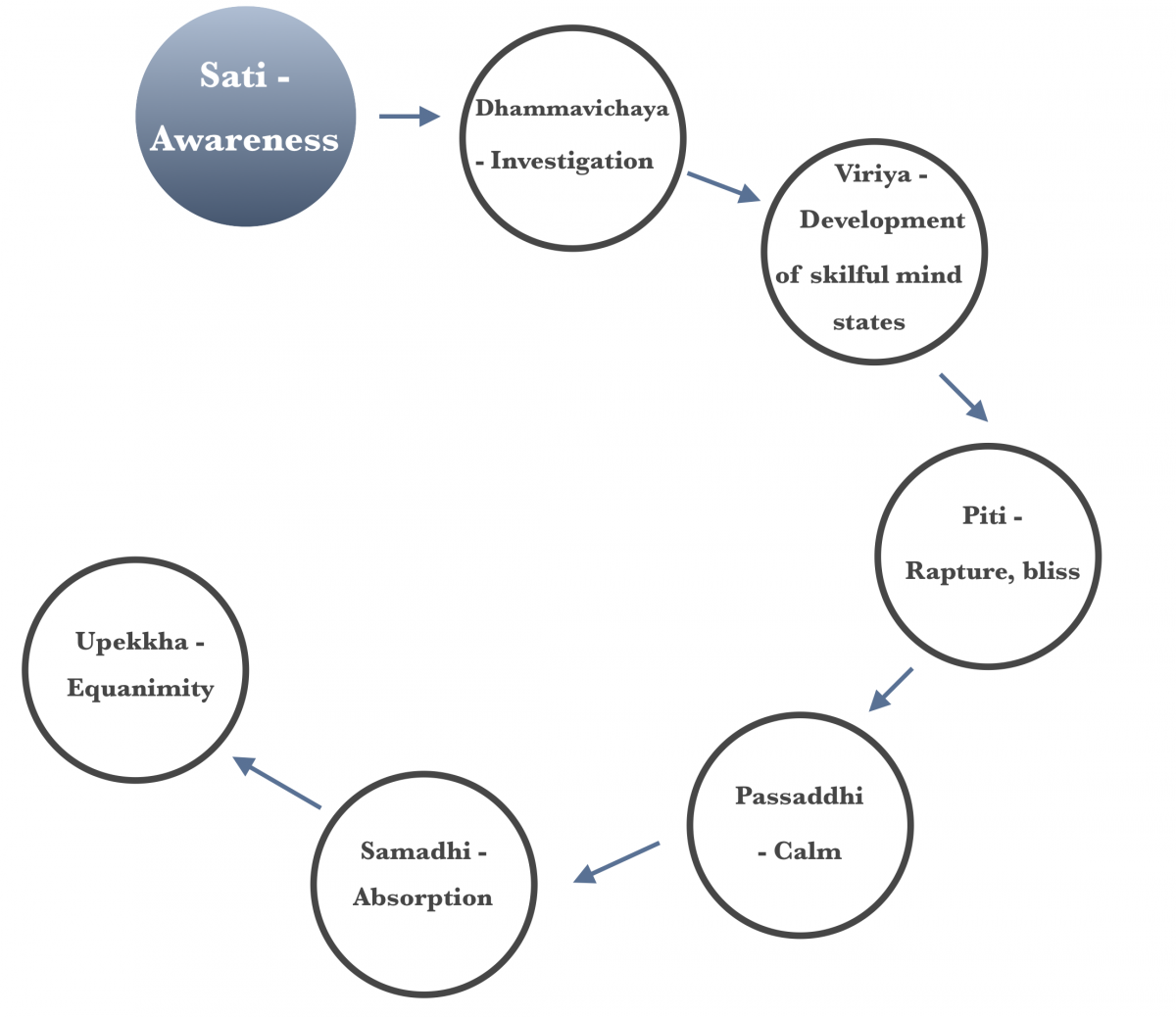Pathways of Yoga Part II - click to see PDF to download or read
Pathways of Yoga, Part II
Further reflections
Having written “Pathways of Yoga, a personal exploration of three approaches to Yoga, a few questions arose. Principally, why? Why take up yoga practice in the first place. Why take up posture practice and why meditate?
I wish to explore three more themes, drawing on the richness, breadth and depth of understanding evolving around these ancient spiritual practices, particularly focussing in the more existential aspect of hathayoga (psycho-physical disciplines) as well as mindfulness and meditation.
- Yoga as a response to the existential situation in which we find ourselves
- “Sense-making” and the Transformation of consciousness.
- Further reflections on the altruistic dimension of our practice.
I write this as a continuing student of yoga having now been practicing for 30 years, especially over the last decade, as a teacher of teachers of yoga in the context of Bodhiyoga International. This as a sequel or Part II to “Pathways of Yoga, a personal exploration of three approaches.
1. The existential situation
We have been born into this world and we are alive, we are awake.
What to do? What are we doing here? Most of the time we are too busy to contemplate such questions. There is the ongoing apparently never ending continuum of work and domestic duties to attend to. But there are moments when we do wonder. We stop. Life often presents an unexpected break in the routine. Rather than shy away from that uncomfortable moment, let’s reflect.
At the end of Part I, I reminded of us of an ancient image from the White Lotus Sutra (first century BCE) for the human situation. We live in a Burning House goes the story. Like children engrossed in playing with their toys and playthings, we fail to see the flames and smoke and that the very structure of the house is alight and in danger of collapsing around and upon us.
Outside is a figure calling to us to get out. Seeing that we are so caught up in our activities the figure presents us with even more enticing objects in the form of highly elaborate carts and chariots. Finally we are convinced and move on. Move out.
The Burning House is “samsara”, marked as it is by “dukkha”, suffering or unsatisfactoriness. A world marked by dukkha is a world marked by pain and suffering, or more subtly, a lack of satisfaction and frustration, more subtlety still the sense of the lack of not realising ones potential.
Essentially, as human beings, we have to come up with a response to two crucial issues.
- That’s there is suffering in the world, in our experience, that others suffer.
- How to realise our fullest potential? How to grow and evolve? What does it mean to realise our potential as human beings.
I want to suggest yoga, especially in the deeper sense of the transformation of consciousness can be a complete response to this human predicament. Any other response is surely only moving the furniture around whilst the house continues to burn down!
2. “Sense-making” and the Transformation of consciousness
Within Yoga itself, if not the entire field of spiritual practices and traditions we have number of responses to these questions. There are many ways of understanding ourselves and many ways and descriptions of understanding the world around us; philosophies and cosmology in abundance. How to discern what is useful to us? I will not attempt a survey of the entire history of human story in this respect. I would like to offer my own attempt to answer these two questions, one, our response to suffering, and two, how to realise our full potential.
An ethical awareness
I was drawn to meditation as taught in the Buddhist tradition. The simplicity of the Buddha seated in meditation attracted me. But what is going on in the apparent stillness of sitting and meditating. Following the Satipatthana (Mindfulness) teaching we have the seven factors of Awakening. (Bodhiyangas)
The first three steps towards Awakening
“Sati-Dhammavichaya-Viriya” describe very well the internal process as we meditate. We develop awareness (Sati), in particular around five aspects as described in the first part of the Pathways of Yoga (sensations, both specific and global, emotions, “change” and breath).
Then we begin to learn to differentiate between what we could call skilful and unskilful states of mind. (Dhammavichaya). This has to be based in an open, friendly and forgiving awareness. Not judging or condemning. We will see that naturally enough certain states lead to a happier freer more expansive experience and others to the opposite. We then allow to develop a more skilful flow of mind states and doing our best to avoid and let go of unskilful ones. (Viriya)…..sounds wonderfully simple.
The secret is in the doing and practicing. No short cuts. This also serves to define what an ethical awareness is. We can practice skilful states of mind, based in generosity, love and greater clarity and wisdom and likewise we can do the opposite resulting in the suffering associated with greed, hatred and confusion. Mindfulness without this ethical aspect potentially leads to being aware in a “disconnected” or even alienated observer-separate-from-that-which is observed fashion. No meaningful action can arise either internally or externally in terms of our relation to ourselves and the world around us. We propose a warm heart felt awareness, an embracing intimate awareness of oneself, others and our surroundings.
Our approach sees that only enlightened skilful action towards others and within ourselves can really alleviate suffering. To fulfil our potential we have to develop our awareness and understanding.

“Sense-making”
How to make sense of the world we live in? How can we deepen our knowledge and understanding?
Mindfulness practice can lead us to “open up” to this question which indeed maybe a mystery, an undefinable being human, an ineffable reality that is us and the world around us. As I described in Part 1, we can see our experience as layers with awareness at the centre, permeating all aspects of who we are and what we know. Mu intuition tells me that becoming aware of ourselves we begin to know ourselves. Knowledge and awareness being inextricably linked.
The Satipatthana (Mindfulness) teaching refers to four areas (body (rupa), sensations or hedonic tone (vedana), heart-mind experience (citta) and mind-contents (dhamma) of which we develop awareness. The intention is to lead us to see these aspects of our experience as not fixed, impermanent, transient phenomena with the invitation to profoundly “let go”. These areas can be described as “layers” of experience which interact with each other.
- Awareness is at the heart of experience, of course also subject to change, coming and going as it does, more refined, more gross.
- We relate directly to the world through the sense doors, hearing, seeing, tasting, touching, smelling and “seeing with the mind”, the mind as a sixth sense organ.
- Sensations inevitably arise, pleasant, painful or more neutral
- Emotions have their own dynamic too, arising in relation to sensations, as in not wanting painful or uncomfortable experience or wanting more of pleasant sensation and becoming attached even or addicted to certain sensations and experiences. We also develop emotional habits or tendencies as well as those that we somehow inherit from birth, which in turn conditions sensations.
- Thoughts arise, come and go, where do they come from, where do they go?
- This awareness “reaches out” to the space around us, other beings and the natural and man-made world in which we live.
3. Further reflections on the altruistic dimension of our practice
The world is in crisis. The image of the world as a Burning House seems more relevant than ever. We are faced by destructive human-made climate change, already reaping havoc and threatening future generations apocalyptically. We face rapacious environmental degradation based on ever growing needs and wants of our societies. We face greater and greater levels of inequality, wars, poverty and endemic gender violence across the developed and developing world, East and West, North and South. How to respond?
Is working on our own consciousness enough? Is it an adequate response to the Burning world? Or are we simply reaffirming the egocentric narcissistic and hedonistic tendencies of our times?
One of the problems is that we lose perspective running around caught up in a haze of domestic and work duties. Furthermore, the “world” is a big place and suffering is limitless. We get stressed out and overwhelmed!
I would argue that Yoga can be a gateway for many people to have a more complete experience of themselves. We get in touch with our body, heart and for a moment we can experience some calm and tranquillity necessary to look without feeling overwhelmed. We are otherwise driven by a more distracted frenetic rhythm, leading to unhappiness, discontent and more confusion. Gaining some stillness and hence perspective allows us to develop an intelligent and sensitive response to what we and the world really needs. This is the beginning.
Yoga is not going to save the world on its own. Lets remember that for those of us practicing, it is a privilege to have the time and energy to dedicate ourselves to our own well-being and not just be running around trying to make ends meet and get food onto the table, which for the vast majority of human is the primary preoccupation.
The next step has to be asking ourselves how can we help. What can we do?
I wish to urge us to look to a collective, collaborative response. We need to get together with others and “do something” for others at the same time healing ourselves. We need to get involved in activities that directly help other people, other living beings, the world of ten thousand things.
We have to get off of our yoga mat and meditation cushion and give. Ideally we’d get together with others and give collectively. So much more can get done that way.
All the best
Suḍāka





